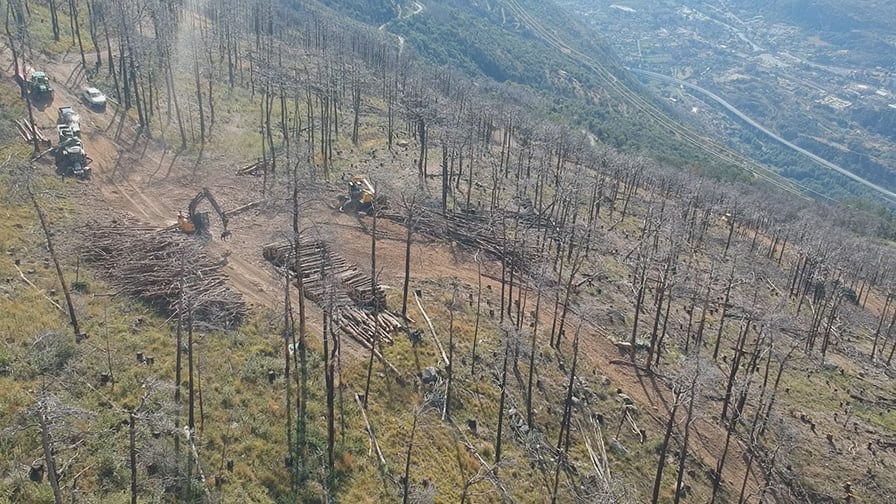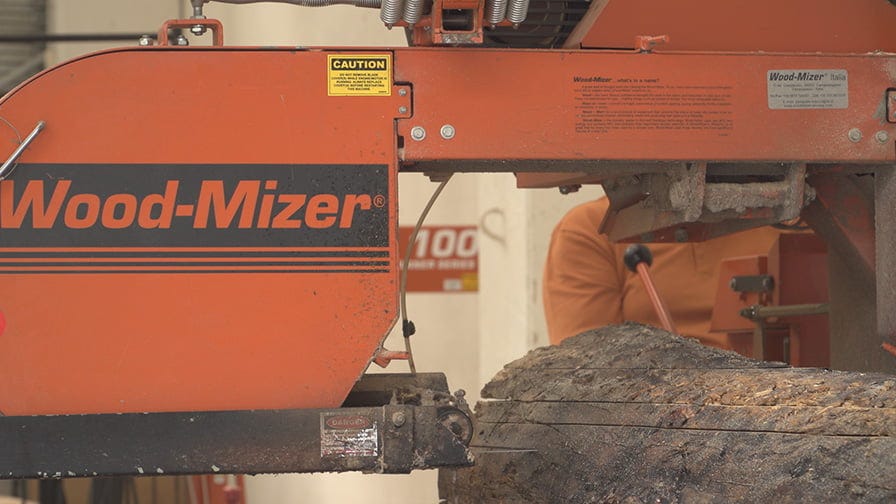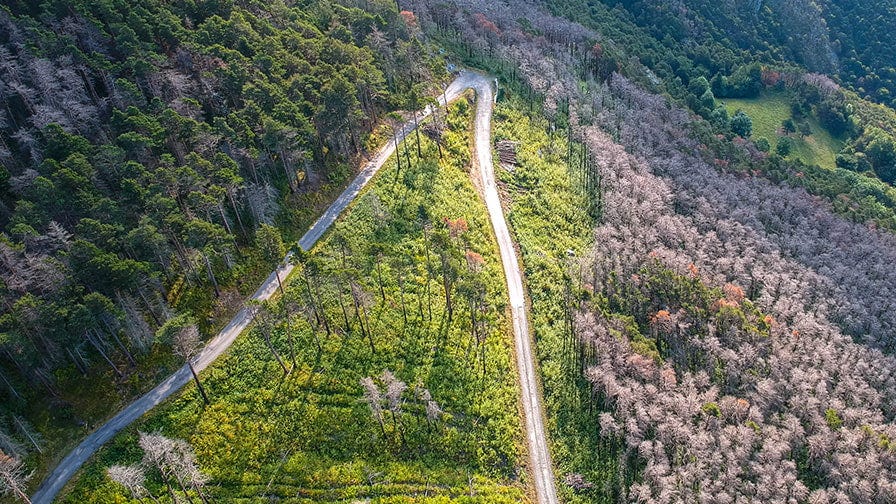From Wildfires to Economic Revival: How a Wood-Mizer Sawmill Rebuilds Italian Forests After Wildfires
By Martina Valentini, GreenPress EnvironMedia

Video: Matteo Berlenga
Four years after the wildfires in the Val di Susa valley on the border between Italy and France, local cooperative La Foresta heals forest wounds by adding value to wood in all its forms.
Eyewitnesses remember the days of the fires as an "apocalypse" with darkness, smoke, and flames that threatened houses. Four years after the fires that struck Val di Susa, inhabitants of Mompantero, one of the disaster epicenters, are still experiencing the events of that night. Their temporary evacuation and excruciating feelings are still difficult to express in words. When the last fires were extinguished at the end of October 2017, the mountain showed its wounds with thousands of hectares of scorched trees, a vast amount of wood on the ground, and danger on the horizon from the threat of new fires to the increased risk of soil erosion.


In short, the situation was critical. But the inhabitants of this generous valley on the outskirts of the province of Turin do not know apathy. Roll up your sleeves and get down to business has always been the life norm. Today, the wounded area is relaunching, and the natural disaster is turning into an opportunity for best practices in sustainable development.
Saving raw materials and reducing waste
"To prevent new fires, we needed to remove most of the timber from the ground immediately," explains Giorgio Talachini, a member of the La Foresta di Susa cooperative.


"At the same time, we started work on erosion control using part of this wood," he adds. "This allowed us to launch the most intelligent strategy possible - the prevention strategy."
"It is essential to avoid emergencies - it costs less than eliminating the consequences, and, most importantly, the forest is preserved."
The cooperative successfully works in two ways by maximizing the use of raw wood materials and significantly reducing wood waste. Both goals are achieved with the Wood-Mizer sawmill technology of sawing wood with thin-kerf blades. At the sorting yard, La Foresta workers select the logs and distribute them according to their characteristics. This is where they cut logs to the desired length. From the forest, which extends over more than 200 hectares, the wood is transported about 15 kilometers to the city of Susa, where it is sorted. The noble parts are sent to the sawmill, and the less valuable material is used to produce wood chips. "With the Wood-Mizer, we can make the most of the wood harvested after the fire," explains Talachini. "The highest quality wood is used to manufacture furniture, tables, and chairs, or to create interior elements."




Minimizing wood waste
The primary wood processing machine is the Wood-Mizer LT40 band sawmill, which can provide a high yield and easily withstand many work hours. The sawmill can cut logs up to 90 centimeters in diameter and exceeding eight and a half meters in length. In addition, the sawmill provides high cutting accuracy with a minimum amount of sawdust. The machine is equipped with an electronic device Setworks to adjust the blade for producing the required board thickness quickly and a water tank for blade lubrication to keep the blade clean while cutting. The thin-kerf blade is only 2 mm thick; therefore, each log produces more boards and less sawdust which is appreciated in the cooperative because they have always been attentive to the economical use of raw wood materials. "Our job is to create finished wood products, and we send the sawdust further for use in bioenergy," says Talachini. "This way, we achieve wasteless production."


La Foresta and Wood-Mizer: Working Together for a Common Future
The La Foresta cooperative in the Val di Susa has been operating since 1995, serving infrastructure mainly in disadvantaged areas, which you can reach only by special transport such as cable cars, off-road excavators, and helicopters. The main goal of the activity is sustainable forest management achieved through adherence to quality standards, the use of highly efficient equipment with low waste levels, and operator training. Wood-Mizer has been supporting La Foresta for 15 years.




"We chose a Wood-Mizer sawmill after evaluating a wide range of alternative technologies. After so many years of cooperation, we are satisfied with the excellent performance of the machine, the after-sales service, and the opportunity, thanks to our relationship with the company, to always be aware of new market trends," says Talachini. "Our cooperation is still developing. We recently purchased a Wood-Mizer planer/moulder for secondary woodworking."
Importance of adding product value
Using quality equipment, Talachini believes, is the key to thriving in a market where product improvement is fundamental. In recent months, the business has been hit by an upward price storm that has swept across the commodity market, hitting its historical price record of over € 600 per cubic meter of timber. The excitement subsided in September, leaving room for a bearish correction. But experience shows that cost volatility is always a potential trap for small companies. "Increasing product value is fundamental," concludes Talachini. "We operate locally, but we have to deal with prices that are driven globally. Therefore, we need to create higher added value so that the company can successfully develop and market itself."



